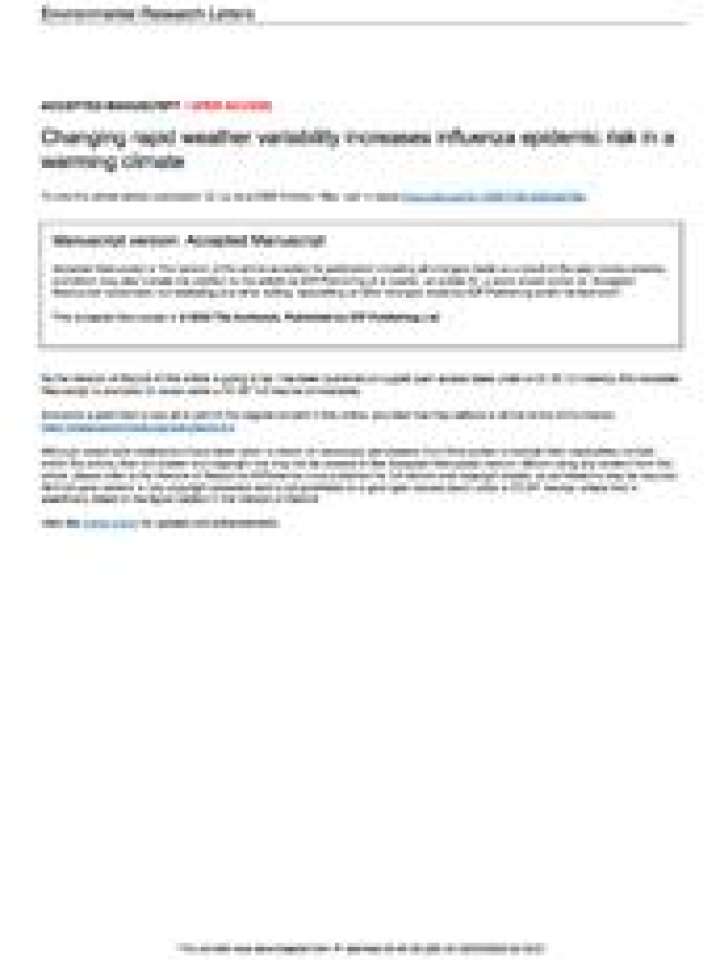Changing rapid weather variability increases influenza epidemic risk in a warming climate
The continuing change of the Earth's climate is believed to affect the influenza viral activity and transmission in the coming decades. However, a consensus of the severity of the risk of influenza epidemic in a warming climate has not been reached. It was previously reported that the warmer winter can reduce influenza epidemic-caused mortality, but this relation cannot explain the deadly influenza epidemic in many countries over northern mid-latitudes in the winter of 2017-2018, one of the warmest winters in recent decades. Here it is revealed that the widely spread 2017-2018 influenza epidemic can be attributed to the abnormally strong rapid weather variability. This study demonstrates, from historical data, that the large rapid weather variability in autumn can precondition the deadly influenza epidemic in the subsequent months in highly populated northern mid-latitudes; and the influenza epidemic season of 2017-2018 was a typical case. The research further shows that climate model projections reach a consensus that the rapid weather variability in autumn will continue to strengthen in some regions of northern mid-latitudes in a warming climate, implying that the risk of influenza epidemic may increase 20% to 50% in some highly populated regions in later 21st century.
Explore further
